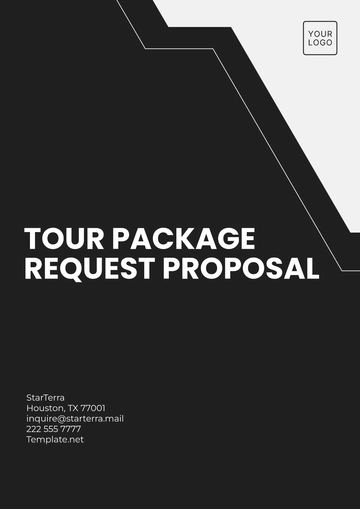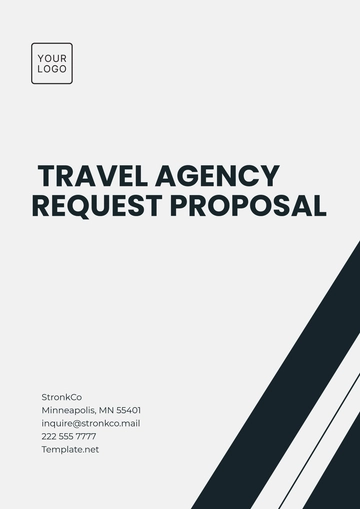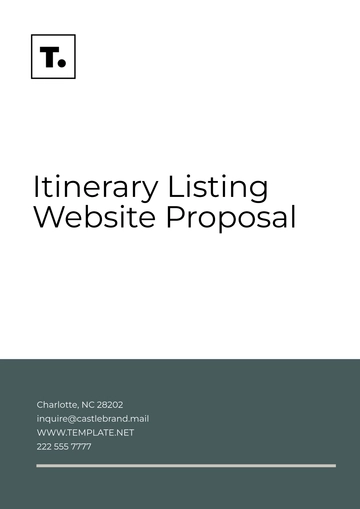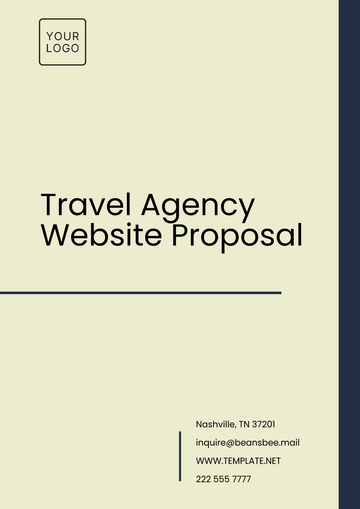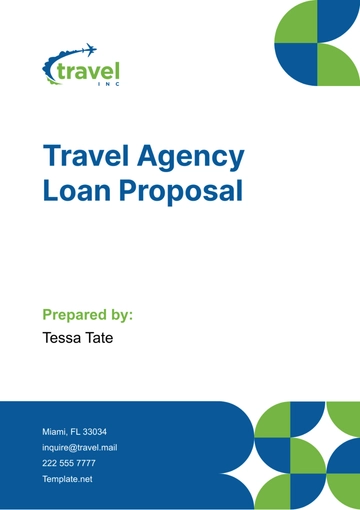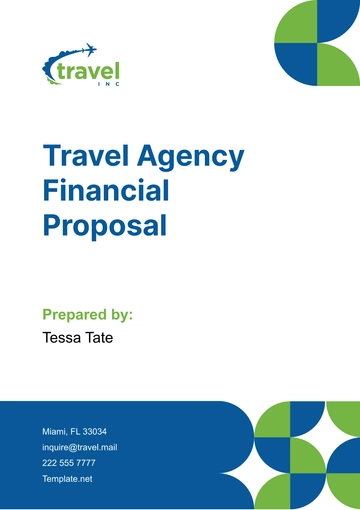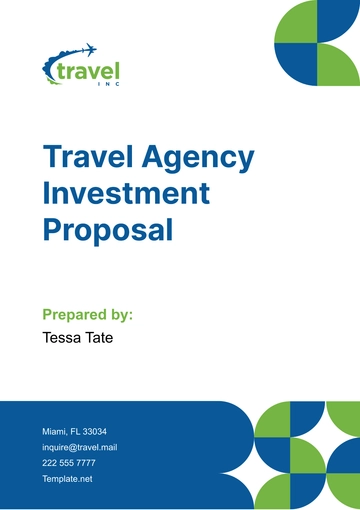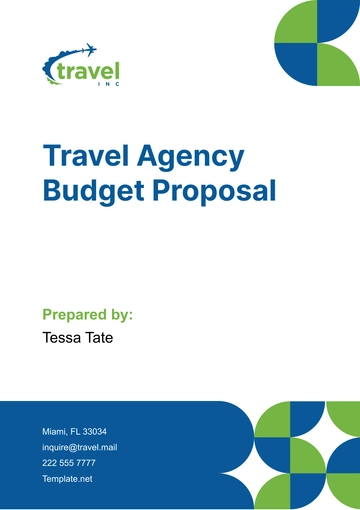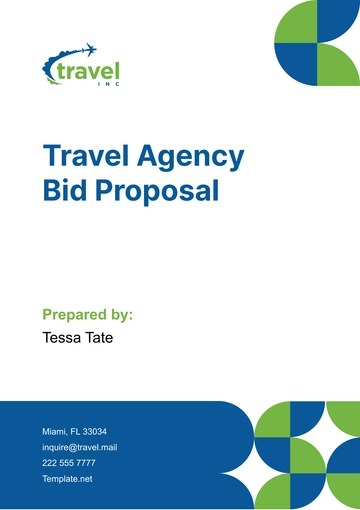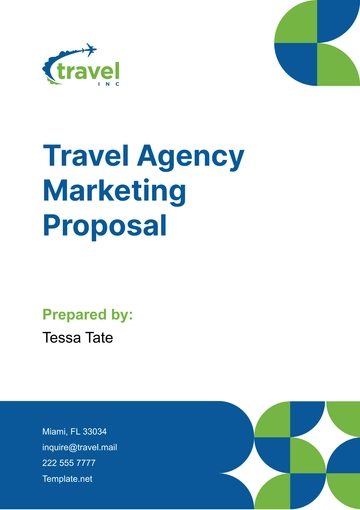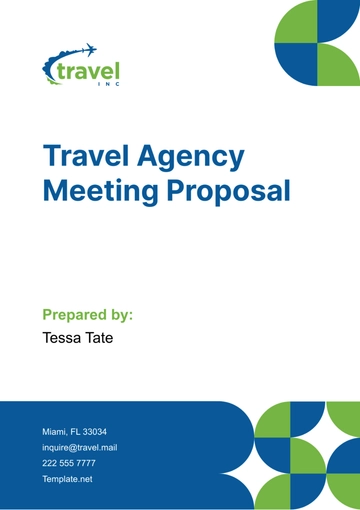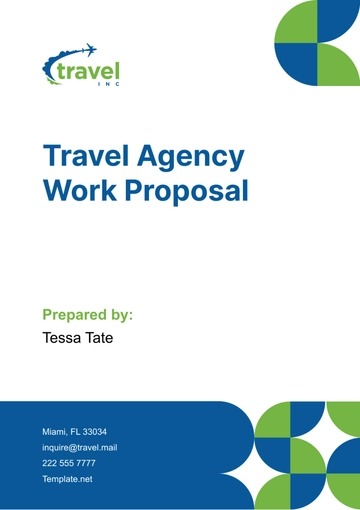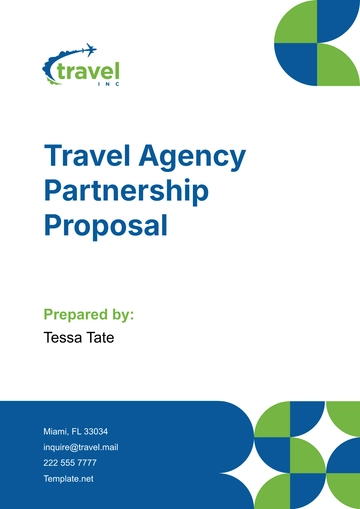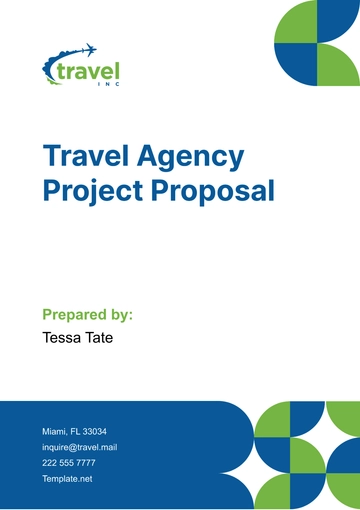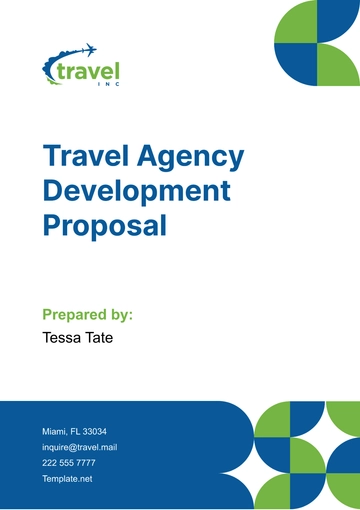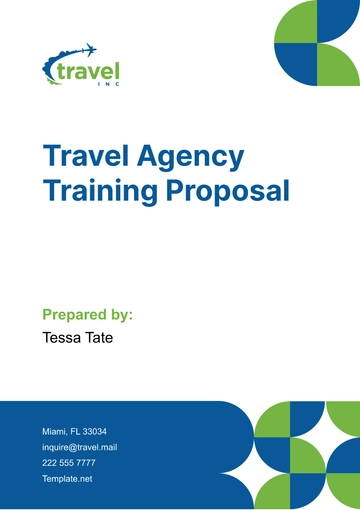Free Travel Agency Training Proposal
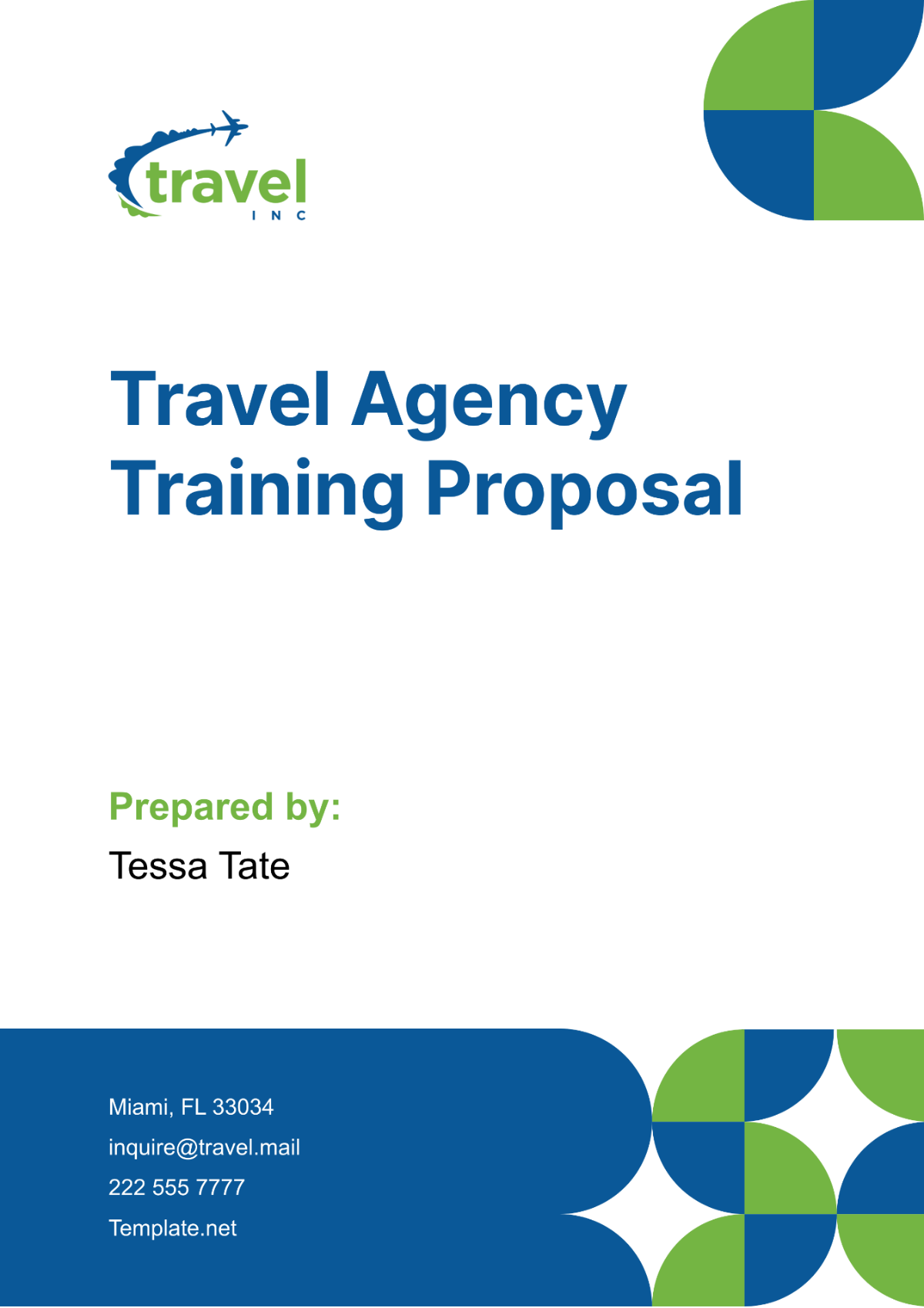
I. Executive Summary
The travel industry is a dynamic and rapidly evolving sector. In order to stay competitive and meet the ever-changing needs of clients, it is crucial for travel agencies like [Your Company Name] to invest in continuous employee training and development. This proposal outlines a comprehensive training program designed specifically for [Your Company Name], with the aim of enhancing the skills and knowledge of our employees. The program is meticulously crafted to introduce innovative practices and state-of-the-art tools that are crucial for thriving in today’s competitive market.
The training program is structured into various phases, each designed to ensure effective learning and skill development. It begins with a preparation and pre-assessment phase, followed by primary training sessions, assessment and feedback collection, and finally, post-training follow-up and support. Each phase is carefully planned and executed to ensure maximum learning outcomes and participant engagement.
The proposed training program represents a strategic investment in our employees, who are our most valuable asset. The total budget for the program is estimated at $8,500, which includes costs for training materials, facilitator fees, venue and logistics, and software and tools. We believe that this investment will yield significant returns in terms of improved performance, increased customer satisfaction, and business growth for [Your Company Name]. We look forward to the successful implementation of this program and the positive impact it will have on our employees and the agency as a whole.
II. Introduction
The travel industry is a dynamic and rapidly evolving sector. With the advent of new technologies and changing customer expectations, it is imperative for travel agencies to stay ahead of the curve. This proposal outlines a comprehensive training program designed to equip our employees with the skills and knowledge they need to excel in this competitive environment.
A. Objectives
Enhance Employee Skills: The primary objective of this training program is to enhance the skills of our employees. This involves providing them with the necessary training to improve their service delivery, enabling them to meet and exceed client expectations. By doing so, we aim to increase the overall productivity and efficiency of our agency.
Stay Updated with Industry Trends: The second objective of the program is to keep our employees updated with the latest trends and technologies in the travel industry. This involves regular training sessions and workshops that cover the latest developments in the industry, ensuring that our agency stays competitive in the market.
Improve Operational Efficiency: The third objective of the training program is to improve the operational efficiency of our agency. By equipping our employees with the necessary skills and knowledge, we aim to streamline our operations, reduce errors, and increase productivity. This will lead to increased profitability and growth for our agency.
Promote a Culture of Continuous Learning: The fourth objective of the training program is to promote a culture of continuous learning within the organization. We believe that learning is a lifelong process, and we aim to foster this belief among our employees. By encouraging continuous learning, we aim to keep our employees motivated and engaged, leading to improved performance and job satisfaction.
Enhance Customer Satisfaction: Lastly, this training program aims to enhance customer satisfaction. By improving the skills and knowledge of our employees, we aim to provide superior service to our clients. This will lead to increased customer loyalty and repeat business, thereby contributing to the growth and success of our agency.
B. Scope
Customer Service Training: The first component of the training program is customer service training. This involves teaching our employees how to effectively handle customer queries and complaints, ensuring that our clients receive the best possible service. By improving our customer service, we aim to increase customer satisfaction and loyalty.
Booking Management: The second component of the training program is booking management. This involves teaching our employees how to efficiently manage bookings, ensuring that our clients’ travel arrangements are handled smoothly and efficiently. By improving our booking management, we aim to reduce errors and increase the overall efficiency of our operations.
Industry Trends: The third component of the training program is industry trends. This involves keeping our employees updated with the latest trends and developments in the travel industry. By staying abreast of industry trends, we aim to stay competitive in the market and provide our clients with the best possible service.
Use of Advanced Booking Systems: The fourth component of the training program is the use of advanced booking systems. This involves equipping our employees with the necessary technical skills to handle bookings efficiently using the latest booking systems. By improving our use of advanced booking systems, we aim to streamline our operations and increase efficiency.
C. Methodology
Interactive Sessions: These sessions involve active participation from the employees, allowing them to learn and practice new skills in a supportive and engaging environment. By using interactive sessions, we aim to make the learning process more engaging and effective.
Practical Workshops: These workshops provide our employees with hands-on experience with the latest booking systems and technologies. By providing practical workshops, we aim to ensure that our employees can apply the skills they learn in their day-to-day work.
Group Activities: Group activities promote teamwork and collaboration among employees, fostering a positive and supportive work environment. By using group activities, we aim to improve team dynamics and enhance the overall effectiveness of our training program.
Feedback Sessions: These sessions provide our employees with the opportunity to share their experiences and learn from each other. By conducting feedback sessions, we aim to continuously improve our training program based on the feedback and experiences of our employees.
Continuous Support: Even after the training program, we will provide our employees with the necessary support to help them apply the skills they have learned in their day-to-day work. By providing continuous support, we aim to ensure the long-term effectiveness of our training program.
Assessment: At the end of the training program, we will conduct an assessment to evaluate the effectiveness of the training and identify areas for improvement. By conducting assessments, we aim to ensure that our training program meets the needs of our employees and contributes to the growth and success of our agency.
III. Timeline
The successful execution of any training program relies heavily on a well-structured and realistic timeline. The following table provides a detailed timeline for the proposed training program, outlining the various phases, activities, and their respective durations:
Phase | Activity | Duration |
|---|---|---|
1 | Preparation and Pre-assessment | 2 weeks |
2 | Primary Training Sessions | 6 weeks |
3 | Assessment and Feedback Collection | 1 week |
4 | Post-training Follow-up and Support | 3 weeks |
A. Preparation and Pre-assessment
The first phase of the training program involves preparation and pre-assessment. This phase lasts for two weeks and includes activities such as setting up the training venue, preparing training materials, and conducting a pre-assessment of the participants to understand their current skill levels and training needs. The pre-assessment is particularly important as it helps tailor the training program to meet the specific needs of the participants, thereby enhancing the effectiveness of the training.
B. Primary Training Sessions
The second phase is the core of the training program, where the actual training sessions take place. This phase lasts for six weeks and includes a series of interactive sessions covering various topics relevant to the travel agency sector. The duration of this phase is the longest, reflecting the importance of providing ample time for participants to grasp the new concepts and skills.
C. Assessment and Feedback Collection
The third phase involves assessment and feedback collection. This phase lasts for one week and includes activities such as evaluating the participants’ understanding of the training content, collecting feedback on the training program, and identifying areas for improvement. The feedback collected during this phase is invaluable in refining future training programs and ensuring they continue to meet the evolving needs of the participants.
D. Post-training Follow-up and Support
The final phase of the training program involves post-training follow-up and support. This phase lasts for three weeks and includes activities such as providing additional resources for self-study, addressing any queries or concerns raised by the participants, and offering support for the application of the learned skills in the workplace. This phase is crucial in ensuring the long-term effectiveness of the training program.
The timeline for the training program has been carefully designed to ensure a smooth and effective learning journey for the participants. Each phase of the program serves a specific purpose and contributes to the overall success of the training. The preparation and pre-assessment phase sets the foundation for the training, the primary training sessions provide the core learning experience, the assessment and feedback collection phase ensures the training meets the needs of the participants, and the post-training follow-up and support phase ensures the long-term application and effectiveness of the training.
IV. Budget
Investing in employee training is a strategic decision that can lead to numerous benefits for a company, especially in the dynamic travel agency sector. The following chart and table showcase the estimated budget for the proposed training program:
Item | Cost | Justification |
|---|---|---|
Training Materials | $1,000 | Necessary resources for practical and theoretical learning. |
Facilitator Fees | $3,000 | Expert services for skill transfer and effective learning. |
Venue and Logistics | $2,000 | Accommodation charges for sessions and related activities. |
Software and Tools | $2,500 | Up-to-date software for hands-on sessions and future use. |
Total | $8,500 |
A. Training Materials
The cost of training materials is estimated at $1,000. These materials are essential for both practical and theoretical learning. They include handouts, manuals, and other resources that will aid in the learning process. The investment in high-quality training materials can significantly enhance the effectiveness of the training program, leading to better learning outcomes and improved job performance.
B. Facilitator Fees
The facilitator fees amount to $3,000. This covers the cost of hiring expert trainers who will deliver the training sessions. Their expertise and experience are crucial for effective skill transfer and learning. Investing in skilled facilitators is a strategic decision that can significantly enhance the quality of the training and lead to better learning outcomes.
C. Venue and Logistics
The cost for venue and logistics is estimated at $2,000. This includes the charges for the venue where the training sessions will be held, as well as other logistics related to the training such as refreshments, stationery, etc. A conducive learning environment is crucial for effective learning, and thus, investing in a suitable venue and ensuring smooth logistics is of paramount importance.
D. Software and Tools
The cost for software and tools is estimated at $2,500. These are up-to-date software and tools that will be used for hands-on sessions during the training. They are also tools that the employees can use in their day-to-day work after the training. Investing in the latest software and tools can enhance the practical aspect of the training and equip the employees with the skills needed to stay competitive in the digital age.
The total estimated cost of the training program is $8,500. This is a strategic investment that can lead to numerous benefits such as improved employee performance, increased customer satisfaction, and business growth. It’s important to note that while cost is a crucial factor, the focus should be on the value that the training program brings. The return on investment from a well-executed training program can be significant, leading to improved business performance and a competitive edge in the market. Therefore, it’s crucial to view the training program not as an expense, but as an investment in the agency’s most valuable asset - its employees.
V. Benefits and Impact
The proposed training program is designed to bring about significant benefits and impact on various aspects of [Your Company Name]'s operations. These benefits are not just limited to the employees who participate in the training, but also extend to the organization as a whole and its clientele.
A. Increased Employee Efficiency
Improved Skills: The training program will equip our employees with the necessary skills and knowledge to perform their tasks more efficiently. This will lead to improved service delivery, resulting in higher client satisfaction.
Enhanced Productivity: With improved skills and knowledge, employees will be able to handle their tasks more efficiently, leading to increased productivity. This will contribute to the overall growth and success of the agency.
Reduced Errors: The training program will also help reduce errors in work processes by equipping employees with the right skills and knowledge. This will lead to improved operational efficiency and reduced costs.
Better Decision Making: The training program will also enhance the decision-making abilities of our employees. With better knowledge and understanding of the industry, they will be able to make more informed and effective decisions.
Increased Job Satisfaction: The training program will also lead to increased job satisfaction among employees. By enhancing their skills and knowledge, employees will feel more confident and satisfied in their roles, leading to improved morale and productivity.
B. Greater Compliance with Global Travel Standards
Improved Service Quality: By complying with global travel standards, we can ensure that our services meet the highest quality standards. This will enhance our reputation in the market and attract more clients.
Reduced Legal Risks: Compliance with global travel standards also reduces the risk of legal issues related to non-compliance. This will protect our agency from potential legal penalties and reputational damage.
Increased Trust: Compliance with global standards also increases trust among clients. Clients are more likely to choose a travel agency that complies with international standards, as it assures them of the quality and reliability of the services.
Competitive Advantage: Compliance with global standards gives us a competitive advantage in the market. It sets us apart from other agencies that do not comply with these standards, making us a preferred choice for clients.
C. Enhanced Leadership Skills
Improved Team Management: The training program will enhance the leadership skills of our employees, enabling them to manage their teams more effectively. This will lead to improved team performance and productivity.
Better Conflict Resolution: Enhanced leadership skills will also enable our employees to handle conflicts more effectively. This will lead to a more harmonious work environment, which is conducive to productivity.
Increased Employee Engagement: Effective leaders are able to engage their teams and motivate them to perform at their best. This will lead to increased employee engagement, which is key to productivity and success.
Succession Planning: By developing leadership skills among our employees, we are also preparing them for higher roles in the organization. This is crucial for succession planning and ensuring the long-term success of our agency.
Improved Organizational Culture: Effective leadership also contributes to a positive organizational culture. Leaders set the tone for the organization, and their behavior and attitudes can significantly influence the culture of the workplace.
D. Client Satisfaction
Quality Service: The training program will equip our employees with the skills and knowledge to provide high-quality service to our clients. This will lead to increased client satisfaction and loyalty.
Personalized Service: With better understanding of the travel industry and client needs, our employees will be able to provide more personalized service to our clients. This will enhance client satisfaction and lead to repeat business.
Quick Response: The training program will also enable our employees to respond quickly and effectively to client queries and complaints. This will enhance client satisfaction and improve our reputation in the market.
Reliable Service: With improved skills and knowledge, our employees will be able to provide more reliable service to our clients. This will increase client trust and loyalty.
Increased Referrals: Satisfied clients are more likely to refer our agency to others. This will lead to increased business and growth for our agency.
E. Business Growth
Increased Revenue: The benefits of the training program, such as increased employee efficiency and client satisfaction, will lead to increased revenue for our agency. This will contribute to the financial growth and success of our agency.
Market Expansion: With improved skills and knowledge, we will be able to expand our services to new markets. This will lead to market expansion and increased business growth.
Improved Reputation: The training program will also enhance our reputation in the market. This will attract more clients and contribute to our business growth.
Sustainable Growth: The training program will contribute to sustainable growth by equipping our employees with the skills and knowledge to adapt to changes in the market and industry.
Long-term Success: By investing in our employees through the training program, we are investing in the long-term success of our agency. Our employees are our most valuable asset, and their growth and success will contribute to the growth and success of our agency.
Competitive Advantage: The training program will give us a competitive advantage in the market. It will set us apart from other agencies and make us a preferred choice for clients. This will contribute to our business growth and success.
VI. Risks and Mitigation Strategies
Every project comes with its set of risks. In the case of this training program, we have identified potential risks and mitigation strategies for each of these risks.
A. Risks
Low Participant Engagement: One of the potential risks is low participant engagement. This could be due to a lack of interest in the training content, ineffective delivery methods, or other factors.
Technological Adaptation Hurdles: Another potential risk is the technological adaptation hurdles that some participants may face. This could be due to a lack of familiarity with the software and tools used in the training.
Inadequate Resource Allocation: The training program requires various resources, including training materials, facilitators, venue, and software. Inadequate allocation of these resources could affect the effectiveness of the training.
Time Management Issues: The training program involves various activities that need to be completed within a specific timeline. Any delays or disruptions could affect the overall schedule of the training program.
Lack of Follow-up Support: After the training program, participants may require additional support to apply the learned skills in their work. Lack of follow-up support could affect the long-term effectiveness of the training.
B. Mitigation Strategies
Interactive Training Methods: To mitigate the risk of low participant engagement, we will employ engaging delivery methods such as interactive sessions, group activities, and practical workshops. These methods are designed to keep the participants interested and involved throughout the training program.
Pre-training Technology Familiarization Sessions: To address the risk of technological adaptation hurdles, we will conduct pre-training technology familiarization sessions. This will help the participants get comfortable with the software and tools that will be used during the training.
Effective Resource Planning: To mitigate the risk of inadequate resource allocation, we will conduct effective resource planning. This involves identifying the required resources and ensuring they are adequately allocated for the training program.
Detailed Project Schedule: To address the risk of time management issues, we will create a detailed project schedule. This will outline the timeline for each activity and ensure that the training program is completed on time.
Post-training Support: To mitigate the risk of lack of follow-up support, we will provide post-training support to the participants. This includes providing additional resources for self-study, addressing any queries or concerns, and offering support for the application of the learned skills in the workplace.
VII. Conclusion
In conclusion, the proposed training program is a comprehensive and well-structured initiative that aims to enhance the skills and knowledge of our employees at [Your Company Name]. It is designed with a focus on practical learning, ensuring that the participants can apply the learned skills in their day-to-day work. The program also includes measures to mitigate potential risks, ensuring a smooth and effective training process. The training program represents an investment in our employees, who are our most valuable asset.
The proposal includes measures to mitigate potential risks such as low participant engagement and technological adaptation hurdles, ensuring a smooth and effective training process. We will continuously improve the training program based on the feedback and experiences of the participants. This will ensure that the program stays relevant and effective in meeting the evolving needs of our employees and the industry. The training program represents our long-term commitment to employee development and excellence in service delivery. We believe that our investment in this program will yield significant returns in terms of improved performance, increased customer satisfaction, and business growth for [Your Company Name].
- 100% Customizable, free editor
- Access 1 Million+ Templates, photo’s & graphics
- Download or share as a template
- Click and replace photos, graphics, text, backgrounds
- Resize, crop, AI write & more
- Access advanced editor
Invest in employee development and skills enhancement with our customizable and editable Travel Agency Training Proposal Template! This strategic document from Template.net outlines proposed training initiatives aimed at improving employee performance. Utilize our AI Editor Tool to customize it to align with your agency's training needs in a few clicks!
You may also like
- Business Proposal
- Research Proposal
- Proposal Request
- Project Proposal
- Grant Proposal
- Photography Proposal
- Job Proposal
- Budget Proposal
- Marketing Proposal
- Branding Proposal
- Advertising Proposal
- Sales Proposal
- Startup Proposal
- Event Proposal
- Creative Proposal
- Restaurant Proposal
- Blank Proposal
- One Page Proposal
- Proposal Report
- IT Proposal
- Non Profit Proposal
- Training Proposal
- Construction Proposal
- School Proposal
- Cleaning Proposal
- Contract Proposal
- HR Proposal
- Travel Agency Proposal
- Small Business Proposal
- Investment Proposal
- Bid Proposal
- Retail Business Proposal
- Sponsorship Proposal
- Academic Proposal
- Partnership Proposal
- Work Proposal
- Agency Proposal
- University Proposal
- Accounting Proposal
- Real Estate Proposal
- Hotel Proposal
- Product Proposal
- Advertising Agency Proposal
- Development Proposal
- Loan Proposal
- Website Proposal
- Nursing Home Proposal
- Financial Proposal
- Salon Proposal
- Freelancer Proposal
- Funding Proposal
- Work from Home Proposal
- Company Proposal
- Consulting Proposal
- Educational Proposal
- Construction Bid Proposal
- Interior Design Proposal
- New Product Proposal
- Sports Proposal
- Corporate Proposal
- Food Proposal
- Property Proposal
- Maintenance Proposal
- Purchase Proposal
- Rental Proposal
- Recruitment Proposal
- Social Media Proposal
- Travel Proposal
- Trip Proposal
- Software Proposal
- Conference Proposal
- Graphic Design Proposal
- Law Firm Proposal
- Medical Proposal
- Music Proposal
- Pricing Proposal
- SEO Proposal
- Strategy Proposal
- Technical Proposal
- Coaching Proposal
- Ecommerce Proposal
- Fundraising Proposal
- Landscaping Proposal
- Charity Proposal
- Contractor Proposal
- Exhibition Proposal
- Art Proposal
- Mobile Proposal
- Equipment Proposal
- Student Proposal
- Engineering Proposal
- Business Proposal
